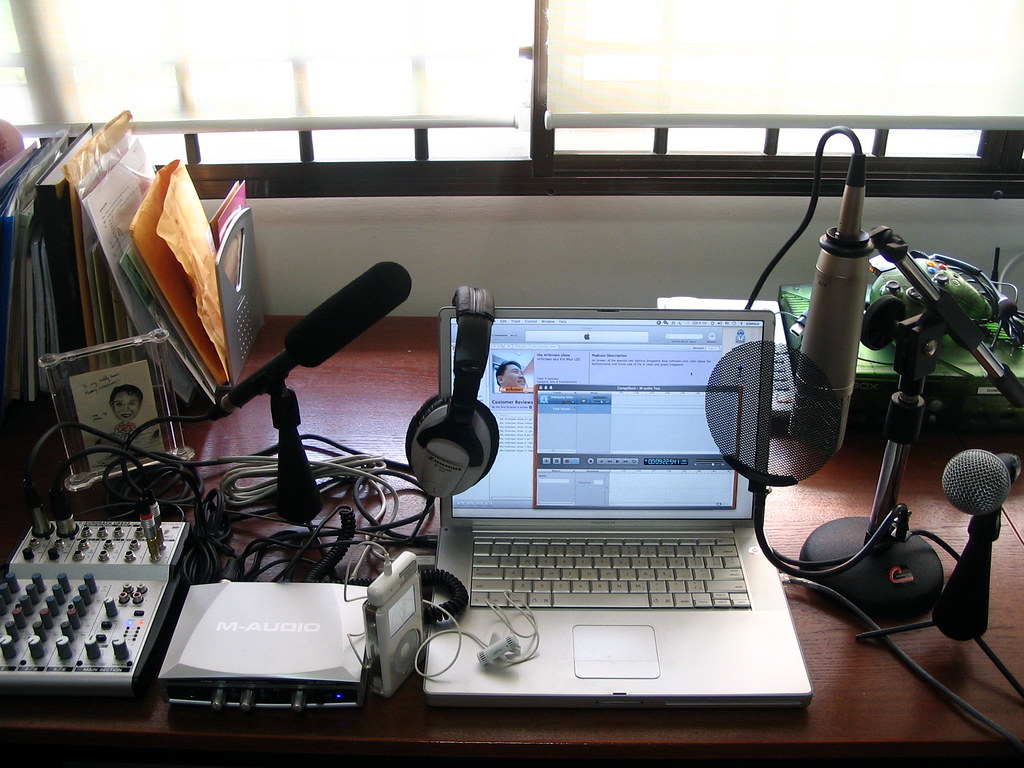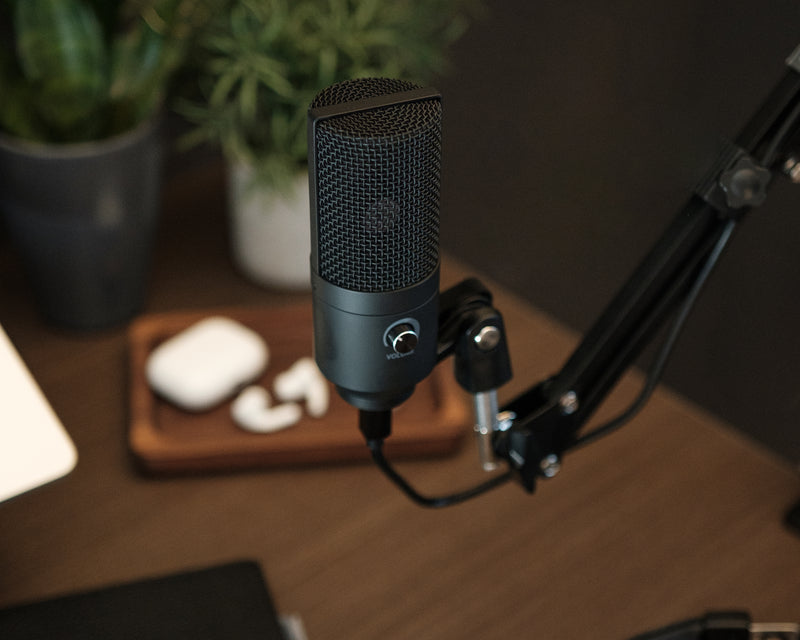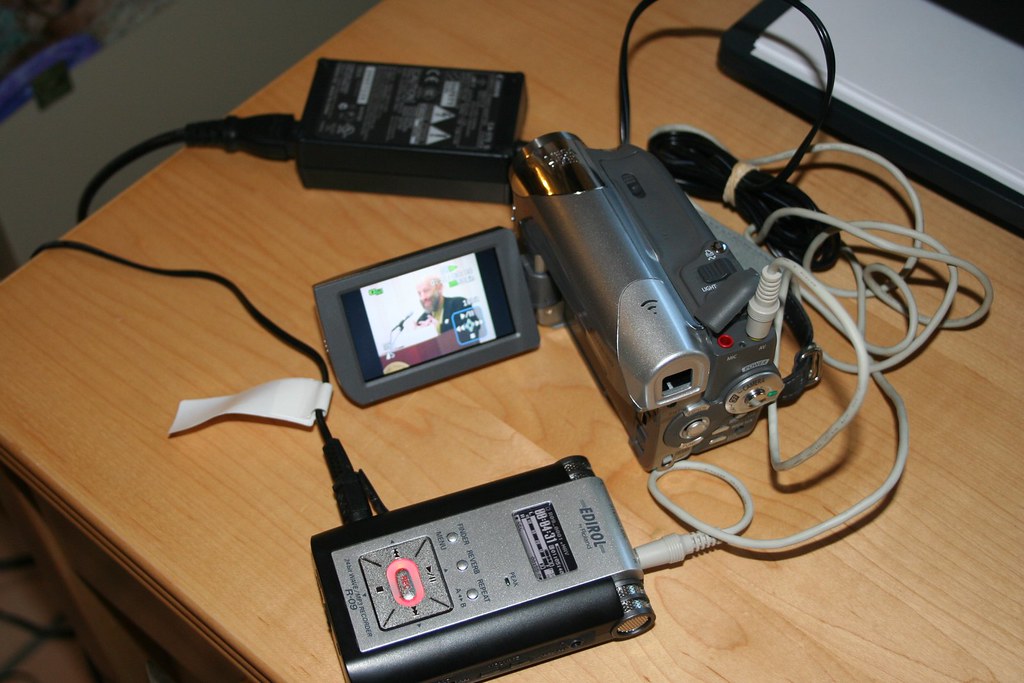Welcome to the world of podcasting, where audio quality is king. Your listeners are tuning in for great content, but poor audio can quickly turn them off. So how do you ensure that your podcast sounds professional and polished?
The answer lies in mastering software. With the right tools and techniques, you can transform your podcast’s audio quality from amateur to expert. explore the power of mastering software and how it can take your podcast to the next level. Prepare to wow your listeners with crystal clear sound and a professional finish.
What is Audio Mastering Software and How Can it Improve Your Podcast?
Audio mastering software is a powerful tool that can help take your podcast audio quality to the next level. The post-production process involves fine-tuning and enhancing the audio to make it sound more polished and professional. The software works by adjusting various aspects of the audio, such as volume, EQ, compression, and stereo imaging.
Using audio mastering software can significantly improve the overall sound quality of your podcast. It can help balance out any inconsistencies in volume or tone, reduce background noise, and make your voice more precise and natural. Additionally, it can add depth and dimension to your audio, making it more engaging for listeners.
Many different audio mastering software options are available on the market today, ranging from free online tools to high-end professional software suites. Choosing the right one for your podcast will depend on your budget, technical expertise, and specific needs. With the right software and practice, you can transform your podcast audio quality from amateur to expert level in no time.
The Benefits of Using Audio Mastering Software for Your Podcast
Audio mastering software can significantly enhance the quality of your podcast by polishing and refining the sound. Audio mastering software can optimize levels, EQ, dynamics, and stereo imaging using advanced algorithms and signal processing techniques to create a professional-sounding mix. This leads to more clarity in speech, improved balance between elements such as music or voiceover tracks, and reduced background noise or hums that can be distracting.
The result is a smoother and richer-sounding audio file that’s easier on listeners’ ears. In addition to improving overall sound quality, using audio mastering software may also reduce post-production time by automating many complex processes like volume normalization or frequency balancing which means less time spent manually editing your podcast files.
How to Choose the Right Audio Mastering Software for Your Podcast
When choosing the right audio mastering software for your podcast, there are a few key factors to consider. Compatibility is crucial, as you want to ensure your chosen software is compatible with your recording and editing equipment. Ease of use is also essential, especially if you’re new to audio mastering. Look for software with a user-friendly interface and clear instructions. Additionally, consider the features offered by each software option. Some may offer more advanced customization options, while others may be more basic but still effective. Finally, price is a factor to consider, as some software options can be quite expensive. However, there are also budget-friendly options available that still offer great results. Take the time to research and compare different audio mastering software options before making a decision.

Step-by-Step Guide to Mastering Your Podcast Audio with Software
Understanding the Basics of Mastering Your Podcast Audio
Before mastering your podcast audio with software, it’s essential to understand the basics. Audio levels and EQ are two key elements to focus on. Ensure your audio levels are consistent throughout the episode, avoiding any sudden spikes or drops in volume. EQ allows you to adjust the balance of frequencies in your audio, ensuring that each element is clear and balanced. Start by identifying any problem areas in your audio, such as background noise or muffled voices, and use EQ to correct them. Once you understand these basics, you can use mastering software for more advanced adjustments.
Getting Started with Mastering Software and Tools
You’ll need to choose the right tools to get started with audio mastering software for your podcast. Look for software that offers a range of features, such as EQ, compression, and limiting. Once you’ve selected your software, import your podcast audio files and listen to them carefully. Identify any issues with the audio quality, such as background noise or uneven levels. Use the software’s tools to adjust these issues and enhance the overall sound quality of your podcast. Save your changes and export the final version in a high-quality format for distribution.
Step-by-Step Guide to Optimizing Your Podcast Audio Quality
- Import your podcast audio file into the mastering software.
- Adjust the volume levels to ensure a consistent sound throughout the episode.
- Use EQ to balance the frequencies and enhance the clarity of your podcast’s dialogue and music.
- Apply compression to even out any spikes in volume and create a more polished sound.
- Add reverb or other effects to enhance the ambience of your podcast’s environment.
- Export your newly mastered audio file and listen back to ensure it meets your desired quality standards. Don’t forget to save a copy of the original file if you need to make any adjustments later. By following these key steps using audio mastering software, you can elevate your podcast’s audio quality and create a more professional listening experience for your audience.
Tips and Tricks for Achieving Professional-Quality Sound in Your Podcast
To achieve professional-quality sound in your podcast using audio mastering software, start by setting the correct levels for your audio tracks. Use EQ to balance the frequencies and remove any unwanted noise. Apply compression to even out the levels and add warmth to your sound.
Use reverb and delay sparingly to create a sense of space without overwhelming your audio. Be mindful of the overall loudness of your podcast, and use a limiter to prevent clipping. Finally, listen back to your podcast on different devices to ensure it sounds great across all platforms. With these tips and tricks, you can take your podcast audio quality to the next level with audio mastering software.

Common Mistakes to Avoid When Using Audio Mastering Software for Your Podcast
While audio mastering software can help you achieve a professional sound for your podcast, there are some common mistakes you should avoid. One mistake is over-processing your audio with too many effects or adjustments. This can lead to distortion and an unnatural sound. Another mistake is not leaving enough headroom in your mix, which can cause clipping and other issues.
Using high-quality source material is also essential when mastering your podcast audio. If the original recording quality is poor, no amount of processing will fix it. Listen to your final mastered version on multiple devices and in different environments to ensure consistent playback.
Lastly, don’t be afraid to experiment with different settings and techniques when using audio mastering software. However, permanently save multiple versions throughout the process to quickly revert if needed.
By avoiding these common mistakes and taking the time to master your podcast audio using quality software carefully, you’ll significantly improve its overall sound quality and listener experience.
Tips and Tricks for Getting the Best Results with Audio Mastering Software
When using audio mastering software, it’s essential to remember some tips and tricks for getting the best results. One key tip is to always start with a clean and high-quality recording. The better the initial recording, the easier it is to enhance the audio with mastering software. Another important factor is using a good pair of headphones or speakers when listening to your mastered audio. This will allow you to hear any imperfections or unwanted noise that may need further adjustment.
It’s also recommended that you make minor adjustments rather than trying to change your podcast’s entire sound drastically. Use EQ (equalization) and compression tools sparingly and only as needed, as overusing these effects can distort your voice or music tracks.
When optimizing volume levels, aim for an average loudness level between -16 LUFS (Loudness Units Full Scale) and -20 LUFS for a balanced sound across all devices. And don’t forget about subtle enhancements like adding reverb or stereo-widening effects to give your podcast more depth.
Overall, experimenting with different settings in your chosen audio mastering software can help you achieve professional-sounding audio that captures listeners’ attention from start to finish.

Top Audio Mastering Software Options for Podcasters on a Budget
Audacity: The Free and Easy-to-Use Option for Podcasters
Audacity is a free and easy-to-use audio mastering software perfect for podcasters on a budget. It offers a range of features such as noise reduction, equalization, compression, and normalization.
Audacity also supports multiple file formats and has a simple interface that makes editing and enhancing your podcast audio easy. While it may not have all the advanced features of paid software, Audacity is a great option for beginners or those needing basic editing tools. Plus, with its active community of users, plenty of tutorials and resources are available to help you get the most out of this software.
Ozone Elements: Affordable and Professional Audio Mastering Software
Ozone Elements is a great tool for podcasters looking for affordable audio mastering software. The software offers various presets and customizable modules to help you achieve professional-sounding audio without breaking the bank. Ozone Elements has an intuitive user interface that makes it easy to use even if you’re new to audio mastering. It also comes with a helpful feature called Master Assistant, which automatically sets up the optimal settings based on your audio’s sonic profile. With Ozone Elements, you can easily polish your podcast recordings by adjusting EQ, compression, stereo imaging, and more in just a few clicks.
iZotope RX Elements: The All-in-One Solution for Audio Restoration and Mastering
iZotope RX Elements is an all-in-one solution for podcasters on a budget looking to improve their audio quality. With features such as noise reduction, de-essing, and dialogue editing, audio restoration is made easy. Additionally, the software provides precise spectral editing tools that allow for targeted EQ adjustments and removal of unwanted noise or sounds. The intuitive interface makes it simple to use even without extensive mastering experience. For those needing additional functionality, higher-tier versions are available with more advanced features. Overall, iZotope RX Elements provides excellent value for its price point and is highly recommended for podcasters seeking a comprehensive yet affordable audio mastering solution.
T-RackS 5: Advanced Audio Mastering Tools for the Budget-Conscious Podcaster
T-RackS 5 is an advanced audio mastering tool that offers a lot of features to budget-conscious podcasters. It has a suite of modules for EQ, compression, saturation, and more. T-RackS 5 also has a Master Match module that automatically matches your audio’s tonal characteristics with other reference tracks. This software provides easy-to-use presets designed by professional audio engineers and even allows customization options for ultimate control over your sound. With its affordable price, T-RackS 5 is one of the best options available for podcasters who want access to advanced tools without breaking their budget.
Advanced Techniques for Customizing Your Podcast Audio with Mastering Software
Customizing Your Podcast Audio with Mastering Software
Once you’ve mastered the basics of audio mastering software, it’s time to explore more advanced techniques to customize your podcast audio. One important technique is mid-side processing, which allows you to adjust the stereo width and balance between different elements in your mix. This can be especially useful for interviews or discussions where one speaker is louder than the other.
Another powerful tool is dynamic EQ, which combines traditional equalization with dynamic range control. With this capability, you can fine-tune specific frequency ranges that need adjustment without affecting other parts of your audio track. For example, if some exact words or sounds are causing distortion or unwanted noise in a particular range, dynamic EQ can help isolate and fix those issues.
With these advanced techniques and others like them, podcasters have more freedom than ever before to create unique and engaging content with high-quality audio production values. As we continue to see advancements in technology and software development, it’s clear that the future of podcasting will be defined by those who embrace these tools and push boundaries in their creative processes.

The Future of Podcast Audio Quality: Trends and Innovations in Audio Mastering Software
Podcast audio quality has come a long way in recent years, largely thanks to advancements in audio mastering software. The demand for sophisticated mastering tools will grow as more podcasters prioritize sound quality and compete for listener attention.
One trend we can expect to see is increased integration between editing and mastering software. This could mean more streamlined workflows that allow podcasters to edit and master their audio within one program. Additionally, there may be a shift towards cloud-based solutions that offer real-time collaboration features.
Another emerging innovation is Artificial Intelligence (AI) technology built into mastering software. AI algorithms can automatically analyze recordings and make corrections based on pre-defined standards or user preferences. This has the potential to save time while also improving overall sound quality.
Ultimately, as podcasting becomes increasingly mainstream, so will the expectations around audio production values. Audio mastering software will be essential in helping podcasts stand out with a crystal-clear sound that keeps listeners returning for more.
Audio mastering software can significantly improve the quality of your podcast by enhancing its overall sound and ensuring that it meets professional standards. You can achieve incredible results with minimal effort by choosing the right software and following a few simple steps.
However, it’s essential to avoid common mistakes and take advantage of advanced techniques in order to fully customize your audio to meet your specific needs. As technology advances, we can expect even more innovations in audio mastering software that will keep pushing the boundaries of what is possible in podcast production. So why settle for mediocre audio quality when you have so many powerful tools? Try out some of these top options today and take your podcasting game to the next level!
Answers To Common Questions
Who uses audio mastering software?
Audio mastering software is used by musicians, producers, and engineers.
What is audio mastering software?
Audio mastering software is a tool used to improve the overall sound quality of a recording.
How does audio mastering software work?
Audio mastering software uses various techniques to adjust levels, EQ, and dynamics to create a polished final product.
What are some popular audio mastering software options?
Popular audio mastering software options include Ozone, WaveLab, and T-RackS.
Who benefits from using audio mastering software?
Anyone who wants to improve the sound quality of their recordings can benefit from using audio mastering software.
Isn’t audio mastering software expensive?
While some options can be pricey, there are also many affordable and even free audio mastering software options available.
